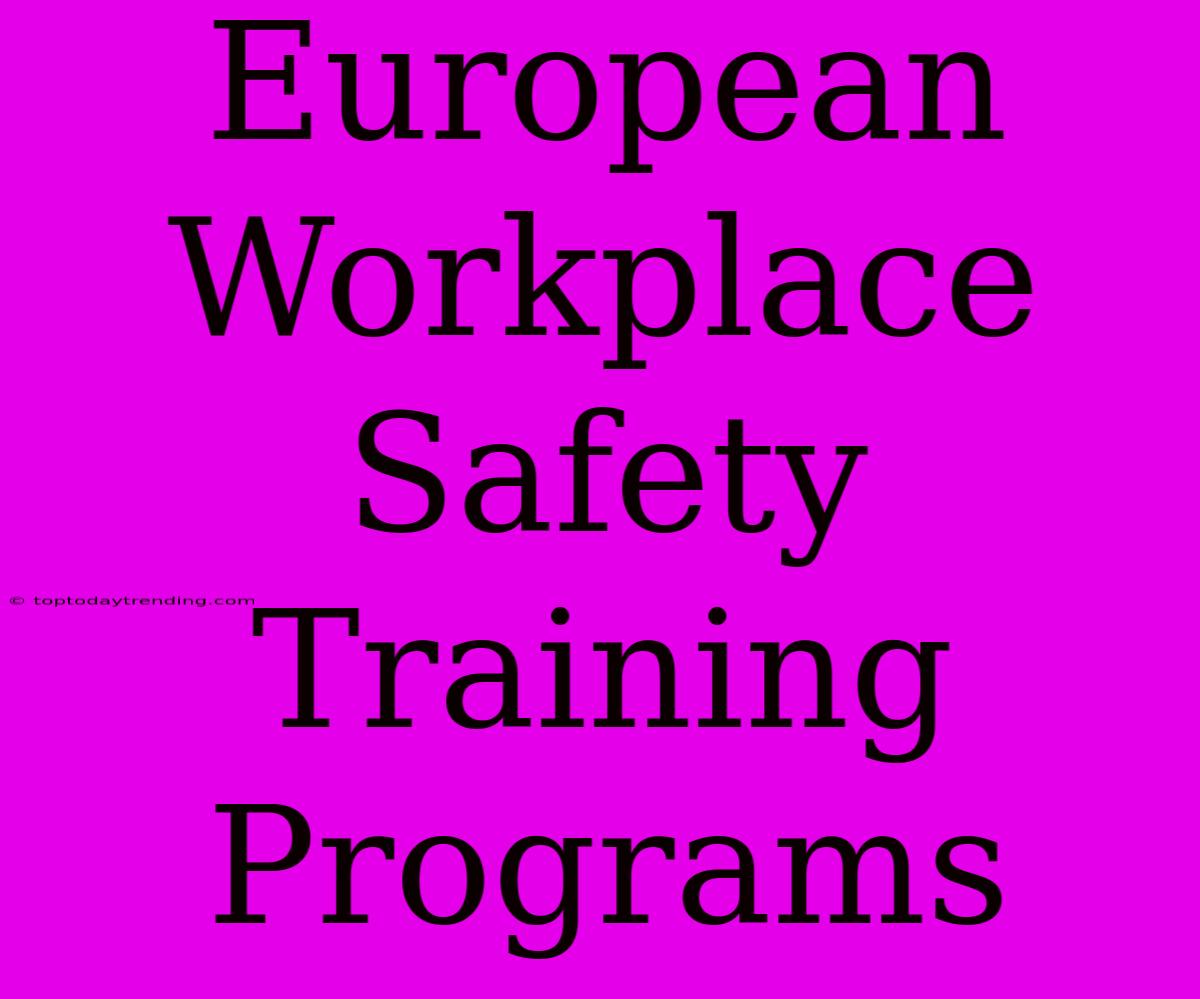European Workplace Safety Training Programs: A Comprehensive Guide
The European Union (EU) places a high emphasis on workplace safety, and it's no surprise. Safe workplaces are essential for healthy workers, productive businesses, and a flourishing economy. To achieve this, the EU mandates various workplace safety training programs for different industries and roles.
This guide will delve into the intricacies of European workplace safety training programs. We'll explore their importance, different types, key components, and how they can benefit both employees and employers.
Why are Workplace Safety Training Programs Crucial in Europe?
The benefits of investing in safety training are multi-faceted:
- Reduced Workplace Accidents: Safety training equips workers with the knowledge and skills to identify and avoid hazards, thereby reducing the likelihood of accidents.
- Improved Employee Health and Well-being: By prioritizing safety, employees feel valued and cared for, fostering a positive work environment and promoting well-being.
- Enhanced Productivity and Efficiency: A safe workplace fosters a sense of security, allowing employees to focus on their tasks without fear of injury, leading to increased productivity.
- Reduced Costs: Accidents can lead to significant financial losses, including medical bills, legal fees, and lost productivity. Safety training can minimize these costs by preventing accidents in the first place.
- Improved Company Image and Reputation: A strong commitment to safety enhances a company's reputation, boosting public perception and attracting talent.
Types of European Workplace Safety Training Programs
The specific training programs required vary depending on the industry, role, and potential hazards. Some common types include:
- General Workplace Safety Training: Covers basic safety practices like fire safety, emergency procedures, risk assessment, and safe handling of equipment.
- Industry-Specific Safety Training: Tailored to the specific hazards of different industries, such as construction, manufacturing, healthcare, or transportation.
- Risk-Specific Safety Training: Addresses specific hazards like working at heights, handling hazardous materials, or using power tools.
- First Aid and CPR Training: Equips employees with the skills to provide immediate assistance in case of an emergency.
- Emergency Response Training: Prepares employees to handle emergencies like fires, evacuations, or spills.
Key Components of European Workplace Safety Training Programs
Effective workplace safety training programs should include the following components:
- Hazard Identification and Risk Assessment: Identifying potential hazards in the workplace and evaluating their associated risks.
- Safe Work Practices: Teaching employees safe work procedures and techniques to minimize hazards.
- Personal Protective Equipment (PPE): Training on the proper selection, use, and maintenance of PPE for different tasks and hazards.
- Communication and Reporting: Encouraging employees to report hazards and near misses to prevent future incidents.
- Emergency Procedures: Demonstrating and practicing emergency procedures for different scenarios.
- Practical Exercises and Simulations: Providing hands-on experience to reinforce safety principles.
Benefits for Employees and Employers
Employees:
- Enhanced Safety Awareness: Increased knowledge of safety hazards and best practices.
- Reduced Risk of Injury: Lower risk of accidents and injuries in the workplace.
- Improved Job Satisfaction: Feeling valued and empowered to contribute to a safe work environment.
- Greater Confidence: Increased confidence in their ability to identify and manage workplace hazards.
Employers:
- Improved Safety Culture: Fostering a culture of safety throughout the organization.
- Increased Productivity: Reduced workplace accidents and increased employee morale.
- Reduced Costs: Lower insurance premiums and fewer claims related to workplace injuries.
- Enhanced Reputation: Strengthening brand image and attracting top talent.
Conclusion
European workplace safety training programs are crucial for creating a safe and productive work environment. By investing in these programs, employers can ensure the well-being of their employees, reduce workplace accidents, and ultimately contribute to a more prosperous and sustainable economy. As technology advances and new hazards emerge, it's vital to continually update and adapt training programs to ensure they remain relevant and effective.

